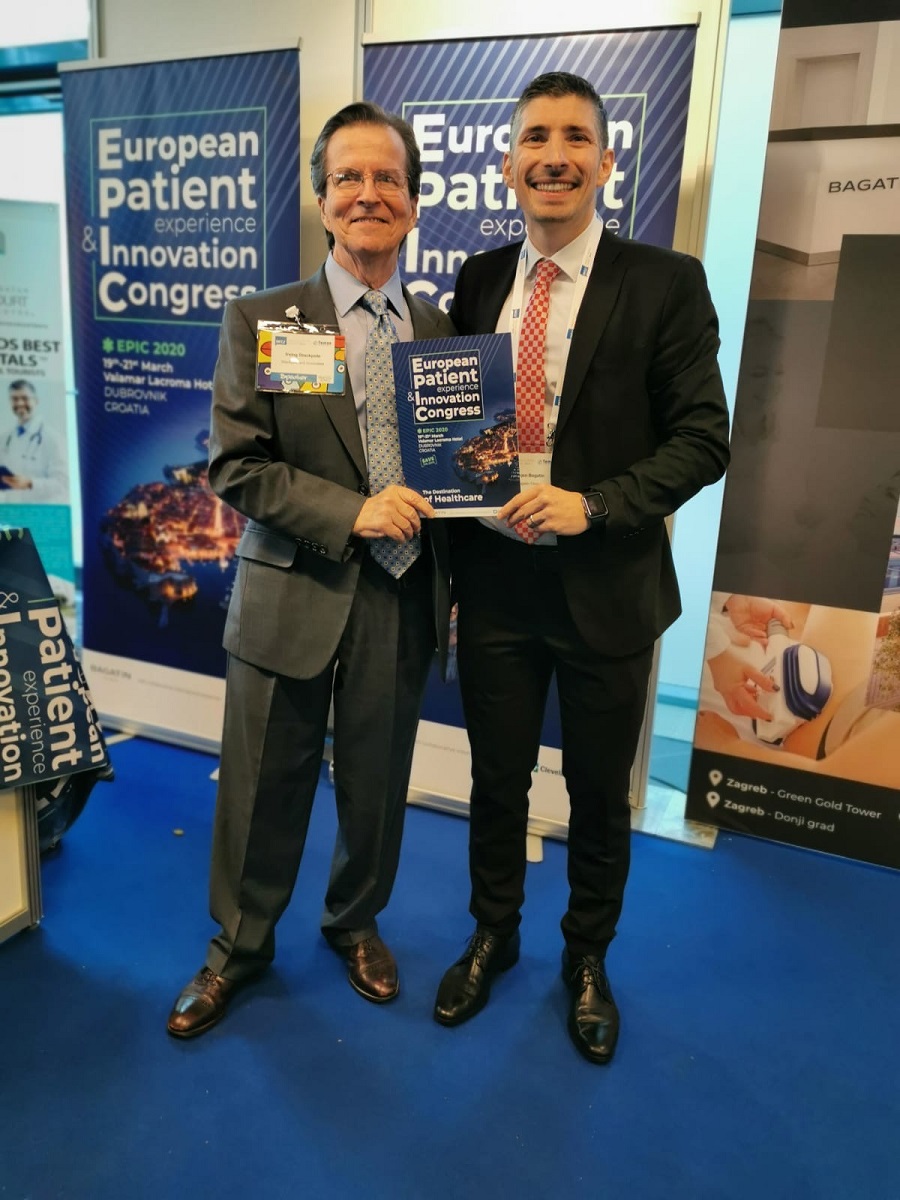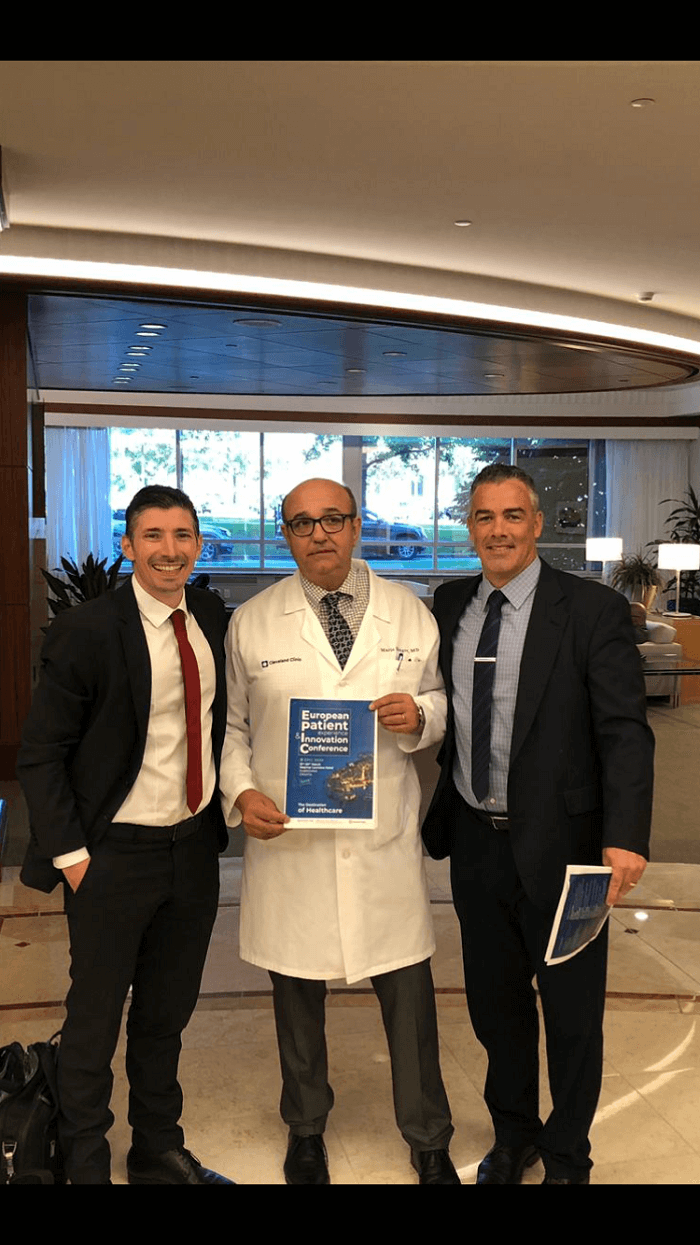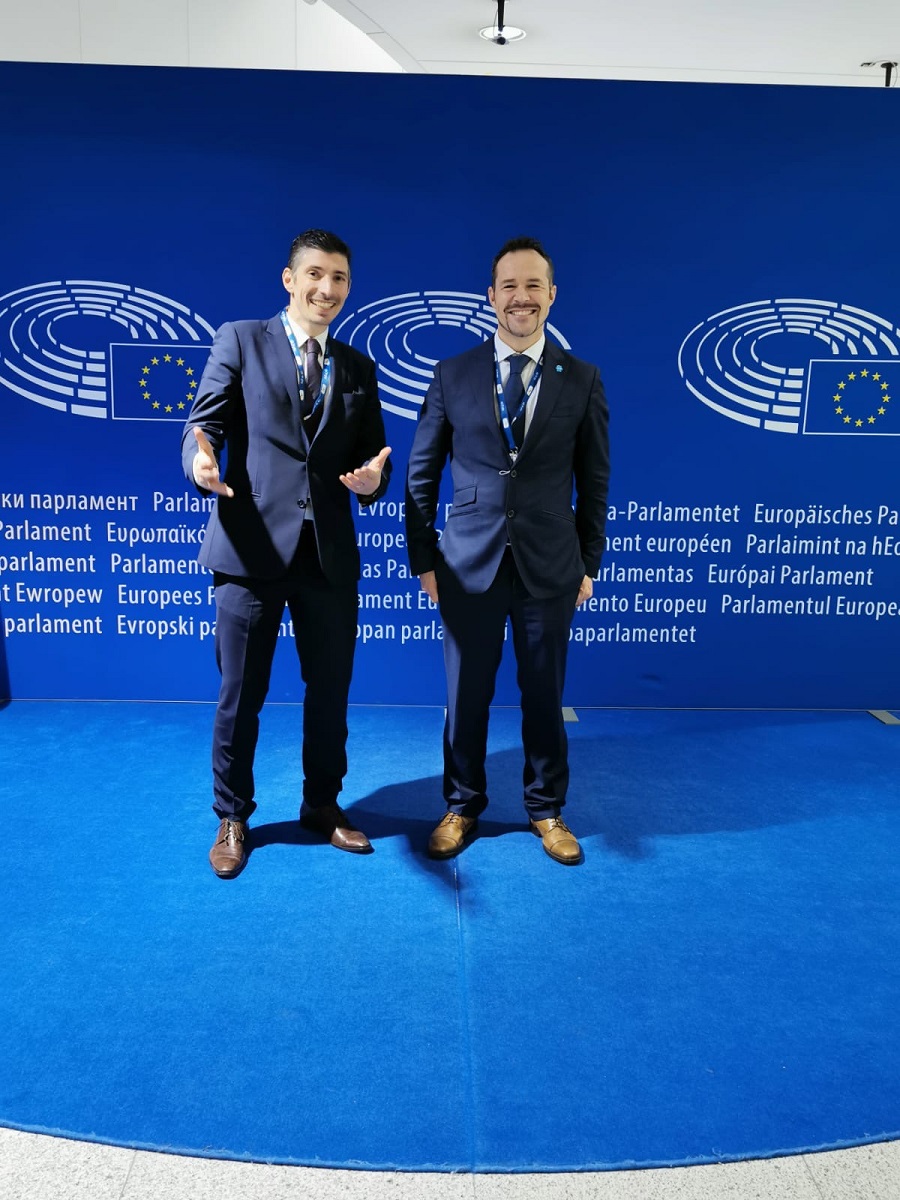Sri Lankans Come to Work in Continental Croatian Region of Zagorje
When you think about continental Croatian cities, with perhaps the logical exception of Zagreb, you tend to think of the lack of job opportunities and the locals making their way abroad. However, that isn't always the case, and some have come from as far away as Sri Lanka to try their luck in no less than the beautiful continental Croatian region of Zagorje.
As Poslovni Dnevnik/Ana Blaskovic writes on the 3rd of February, 2020, Croatian citizens have been off seeking their luck and happiness in other European Union countries, and now Michelle and her compatriots will be able to do the same, because after five years in Croatia, they can go and seek employment in the EU.
Somewhere halfway "in the pocket" between the two motorways, Zagorje to Macelj and Varazdin to Gorican, below the northern slopes of Ivancica, lies the picturesque continental Croatian town of Ivanec.
Although its population doesn't even stretch to 15,000, the area is known for its low unemployment, an export-oriented manufacturing industry and more. Among the companies that have reached outside of EU borders for access to a foreign (third country) workforce is the Ivancica footwear factory whose brand of children's shoes, Froddo, is known to parents in 40 countries around the world, not only here in Croatia.
While they have successfully adapted to the traffic ''handicap'' with good delivery planning, they still say that "time is money", and the burning problem of a shortage of workers has proven to be a major obstacle for them. Therefore, last summer, the continental Croatian town ''cast its net'' far and wide in its search for foreign workers. That proverbial net stretched all the way to the Indian subcontinent, miles away from Croatia's more classic regional pool which is mostly relied on by domestic companies. In mid-December, 18 Sri Lankan workers arrived in the continental Croatian town of Ivanec.
Ten men and eight women from tropical Sri Lanka arrived during the fall of the very the first snow in Zagorje, which was seen for the first time in their lives, as Sri Lanka is only 780 kilometres away from the Equator, much like the distance from Zagreb to Berlin.) They came with the help of Astra Centre, a subsidiary of the US company Aster International, which brings Croatian companies staff from abroad, primarily from countries like Honduras, Sri Lanka, Vietnam and the Philippines.
Unlike some other stories of foreign workers who see the promised land in Croatia, the Sri Lankans did not have to borrow money from obscure loan companies to get here. The rules of the Astra Centre are extremely strict: once a worker meets the requirements and goes through the elimination process, the employer must pay for their travel and their insurance, and the mediator makes sure that the worker is hired according to all of the proper regulations. Under Croatian law, a foreign worker must have the same rights and obligations as a Croatian worker.
Michelle Ashniya Rodrigo Warnakulasooriya is 25 years old, she worked in a hospital as an administrator back in Sri Lanka, and spent her spare time sewing with her mother. After the Easter bombings last year, in which 259 people were killed and 500 injured in the capital, Colombo, she decided to apply for a job in Croatia. "I'm very happy with the job, the other workers are very nice, they help us a lot and we like it here," she says.
She adds with a laugh that "it's just a little bit cold."
"We knew what the weather was like here. Before our arrival, we did a lot of research on Croatia. We love the snow, we like change," she says on behalf of her fellow countrymen. She is an informal spokeswoman because not everyone speaks English. Her native language is Sinhala, which is spoken by most islanders, and a third of them can speak Tamil. Although Sri Lanka is a former British colony of Ceylon, after gaining its independence in 1948, English was abolished as an official language, which of course causes issues for those seeking better lives abroad.
For those who do not speak English, any attempts at conversations tend to look a bit like something out of a pantomime, and there is always the Google translate app, which, while not perfect, gets the message across generally. She is slowly learning Croatian, having mastered ''How are you?'' (Kako ste/si), ''Thanks'' (Hvala), ''Molim'' (Please) and ''igla'' (needle), which is needed for her work.
Make sure to follow our dedicated lifestyle page for more.
Bosnia Won't Become Parking Lot for Migrants, Says Minister in Zagreb
ZAGREB, February 3, 2020 - Bosnia and Herzegovina's Security Minister Fahrudin Radončić on Monday said in Zagreb that economic migration is not a humanitarian issue and that he would do everything so that Bosnia and Herzegovina does not become a parking lot for migrants.
"We have deliberately chosen Croatia for our first bilateral meeting to show that relations with Croatia are strategically important for us because we share more than one thousand kilometres of border," said Radončić who was recently appointed as the country's new Security Minister.
"Bosnia finds it exceptionally important that Croatian border is absolutely impenetrable for illegal migrants for security and other reasons," Radončić underscored.
"Not only will Croatia achieve its objectives with regard to entering the Schengen Area in that way, but it will also achieve a pragmatic position in that the route across Bosnia and Herzegovina will not be that attractive for migrants and they will bypass us," he explained.
Croatia's Interior Minister Davor Božinović agreed with his counterpart but added that it is not in anyone's interest for another or third route to exist.
"We need to come to an agreement at the EU level about the objective and intention with regard to economic migrations," Božinović added.
"Solidarity of everyone in Bosnia and Herzegovina and the region is necessary. If the EU and we do not come to an agreement, there will be problems. I will do everything for Bosnia and Herzegovina to not become a parking lot for migrants," Radončić underlined and called on Brussels to not treat the migrant crisis merely as a humanitarian issue but one of security too.
He added that 93% of EU support for Bosnia and Herzegovina is used for humanitarian aid and only 7% is allocated for security issues.
Božinović said that he and his counterpart had agreed to stronger cooperation between border police while Radončić warned of the "alarming situation," in his country in that regard.
"Each border police officer patrols 25 kilometres of the border. In the past three years, there has not been one new police officer employed in the border police," Radončić stressed and added that the country urgently needs 400 police officers and in the long run 1,200.
Božinović said that today almost all security issues are transnational and that cross-border cooperation is essential.
He underlined that last year Croatia arrested a thousand smugglers and added that this is "one of the fastest growing forms of organised crime in these regions."
"We have already arrested 95 people since the beginning of the year. That is certainly one area where cooperation has to be additionally strengthened with the relevant services in Bosnia and Herzegovina and also elsewhere," Božinović added.
In the end, Radončić thanked Croatia for its support to Bosnia and Herzegovina and invited Božinović for a visit.
More news about migrant crisis can be found in the Politics section.
Zagreb's Budget Gap Reaches 400 Million Kuna
ZAGREB, February 3, 2020 - The City of Zagreb ran a budget deficit of about 400 million kuna in 2019, while the deficit carried over from the previous period is 628.9 million kuna, the city's Finance Office said in a statement on Monday, noting the negative impact of tax reforms on the city's revenues.
The statement came after Jutarnji List newspaper said on Monday that the head of the Finance Office, Danijela Juroš Pečnik, had warned the city government in a letter last week that the city's budget deficit exceeded 1 billion kuna last year.
The Finance Office said that it was an internal document normally sent to the heads of city administrative bodies to "achieve better budget discipline."
The annual financial report for 2019 has not been finalised yet, and the deficit is estimated at 400 million kuna, while the deficit carried over from the previous period is 628.9 million kuna, the statement said.
"In accordance with rules governing budget accounting, a deficit can be covered successively over a longer period of time. The deficit of 628.9 million kuna carried over from the previous period is envisaged to be covered from the projected budgets for 2021 (253 million kuna) and 2022 (375.9 million kuna)," it said.
The Finance Office said that after determining the final result for 2019 the City would analyse the financial situation and causes of the deficit, define measures to ensure stable and sustainable business, and consider measures to increase revenues, improve collection of claims and streamline the business.
More Zagreb news can be found in the Lifestyle section.
Croatian Medical Tourism's Mr Positive Ognjen Bagatin on EPIC and Patient Experience
February 3, 2020 - Croatia will be hosting the first European Patient Experience and Innovation Congress (EPIC 2020) in Dubrovnik 2020. Meet the man behind the project, Ognjen Bagatin from Bagatin Clinic in Zagreb and Split.
He is the dynamic pioneer of Croatian medical tourism, a man determined to learn from the best and introduce the best to health tourism in Croatia. Which is how Dubrovnik came to be home to the first-ever European Patient Experience and Innovation Congress, taking place in Dubrovnik from March 19 - 21. TCN caught up with Ognjen Bagatin, the charismatic CEO of International Cosmetic Surgery Clinic of the Year 2019, Bagatin Clinic.
EPIC is the first patient experience and innovation congress in Europe. Tell us firstly what you mean by the term 'patient experience' and why does it merit its own conference?
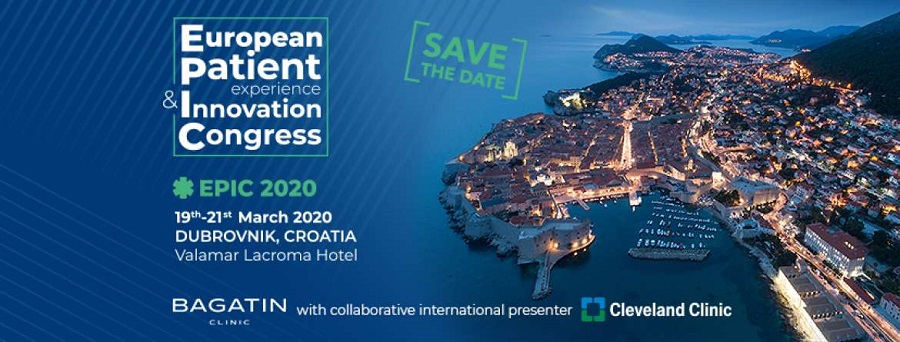
Thank you for a great question. The goal of the „Patient experience“ is to put the focus on the patient-first approach, and the main goal is to get better medical outcomes and to measure them. It is important that all decisions we have in healthcare are looked through the eyes of the patient, and this is something that everybody in healthcare agrees on, and understands. If you place the focus on patients and patient-first approach, we will make better decisions and bring value to patients in all our health systems.
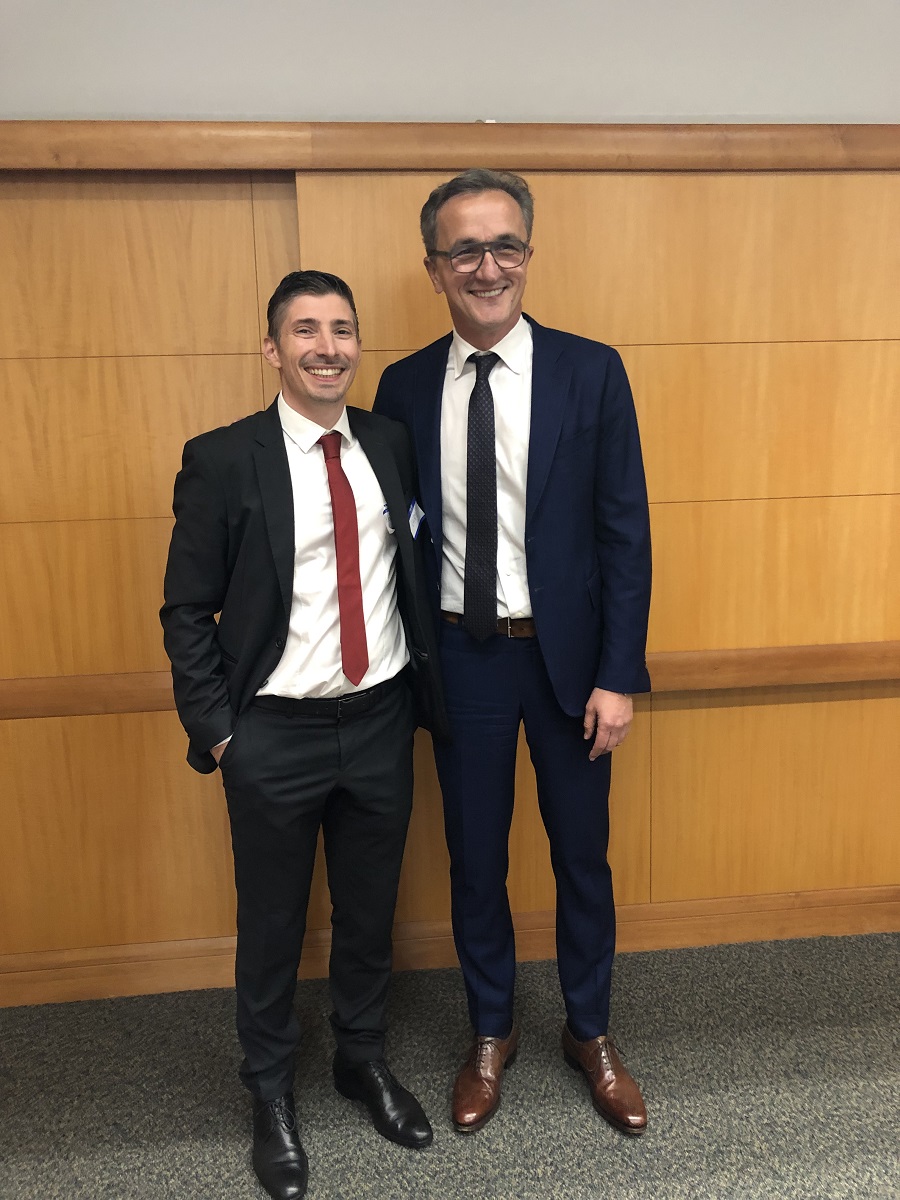
(Ognjen Bagatin with Cleveland Clinic CEO Tom Mihaljevic)
With the digital transformation being so instrumental in healthcare, we wanted to bring all the best innovation that make patient experience better and with that better outcomes for the patients and less cost for health systems in the long run. Cleveland Clinic is a pioneer of Patient Experience, and they were one of the first who opened an office of patient experience in their clinic, even assigning a CXO (Chief Experience Officer). But this is not all, they are sharing that if you want to improve the patient experience, first you need to improve the medical staff experience. You can’t have a great patient experience without having a great medical staff experience.
This should not be just once a year congress, this should be a way of life for health in Europe. A continuous improvement in patient experience every day of the year, and we wanted to bring best of the best to help us with that.
(Ognjen Bagatin with co-organiser Irving Stackpole - read Irving's epic EPIC interview with TCN here)
Tell us how this conference came about, as it has some interesting organizers - the best hospital in the world (Cleveland Clinic), a top medical tourism consultancy (Stackpole & Associates), and a clinic in Zagreb (Bagatin Clinic). Where did the idea come from, and how did you all fall into cooperation?
At Bagatin Clinic we always think about how to provide the best service to our patients and our clients, and the idea came to me when I was in Australia a few years ago visiting few top-notch hospitals to see what they are doing in this field. It led me to HSS hospital in Sydney where they had a huge sign saying „PATIENT FIRST“ in every room, to remind the staff who is the most important VIP person in the hospital.
I consider that is a great way to make your mission short and sweet and I asked people in the hospital if they came up with this or they saw it somewhere else? They said one of their top surgeons had worked in Cleveland Clinic and he transferred the culture to their hospital. So I went to Cleveland Clinic to experience this culture and the rest is history.
(Ognjen Bagatin with Team Cleveland - Mario Škugor and Joe Sweet)
I had a great support there from Mario Škugor, the endocrinologist from Cleveland Clinic who introduced me to the CEO of Cleveland Clinic, Tomislav Mihaljevic MD, and Joe Sweet from the international office of Patient experience. Since Cleveland Clinic is opening their first-ever European clinic in London, near Buckingham Palace, in 2021, they also wanted to spread the Cleveland way of healthcare approach in Europe, and we decided to do this amazing congress after 2 years of preparation. We have an amazing announcement of Tom Mihaljevic for this Congress that have been seen by thousands of Healthcare professionals all around Europe:
To make it more professional, and on a higher level, we approached Irving Stackpole (top-level medical tourism and healthcare consultant) and Daniel C. Shaw (a leader from Global Rating Clinic, an amazing accreditation and reputation building organization) to join us to make a great impact on European Health systems and shift the epicenter of innovations in healthcare from US to Europe and with this to lift the medical outcomes results in our health systems. We as a team, together with Cleveland Clinic champions Mario Škugor and Joe Sweet, and Bojan Pintaric (executive director in Bagatin Clinic) and Sara Bukic (EPIC project leader) have formed a team who can really make a difference. We are very excited and can’t wait for the Congress to start.
Who should come, why, and what will they get from the conference?
Great question. The European Patient Experience and Innovation Congress will be a high energy, stimulating event for everyone, from C -Suite executives, to clinical practitioners, clinic owners, scientists and investors. EPIC brings together some of the most influential physicians, MedTech startups and health professionals from Europe & beyond to the table to improve how your patients will experience healthcare in the near future. As technology continues to help us achieve previously unattainable results in healthcare, join us for an insiders' look at which technologies, ideas & innovations are improving the patient experience with some of the leading clinics & healthcare companies of the world so that you can stay ahead.
(Ognjen Bagatin with co-organiser Daniel Coulton Shaw. Read Daniel's TCN interview for EPIC here)
We will explore:
- • The design of systems to improve patient experience
- • The role of science, artificial intelligence and big data
- • Investment opportunities
- • Bedside and interpersonal methods to improve patient care
- • Mobile and personal care apps
- • The “future” of healthcare
And you will have an opportunity to be a part of a boutique event with some of the giants of healthcare like Cleveland and Mayo Clinic, and many, many more as well. At the moment we have attendees from 22 countries in the world (17 from Europe) and the number is increasing every day.
Just looking at the list of speakers already assembled and with more to be confirmed, it looks like a medical tourism A-list - Cleveland Clinic, Mayo Clinic, Disney Institute, World Bank, the editor of IMTJ, as well as renowned Croatian experts such as Dragan Primorac from St. Catherine Specialty Hospital and Nikica Gabrić from Svjetlost. Tell us more.
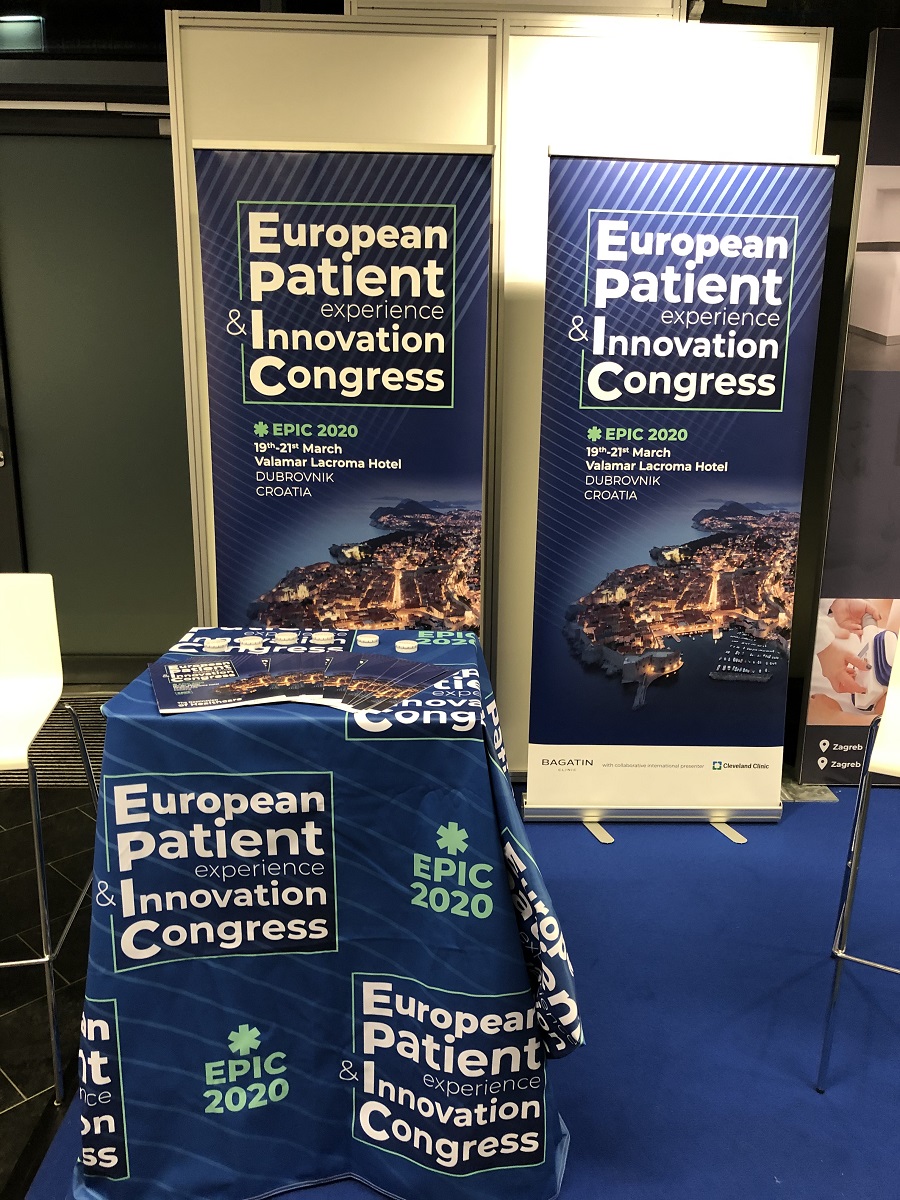
I could talk all day about them, the organizational team has done a really amazing job of bringing to one event an incredible set of speakers from all over the world. The names of some of our keynote speakers are:
- Francis Papay, MD, a plastic surgeon from Cleveland Clinic, who did the first face transplantation with his team in North America – a fantastic story.
- Beata Kurucz, EIT (EIT Health), and they stimulate start-ups to bring innovation to life while building a globally competitive European healthcare industry.
- Stephan Bender from Disney institute – who will share with us how a hospital would look like if it was run by Disney, a top hospitality brand in the World
- Ivan Duggan from Cisco, an innovator who will share with us how the future will look like
- Rahul Kashyap, MD, Mayo Clinic innovator and clinician, He is an award-winning public speaker. He has received awards for exemplary research, quality improvement and leadership
- Dragan Primorac, MD, St. Catherine Hospital – who will share his futuristic view of personalized medicine and St. Catherine`s cooperation with Mayo Clinic and so on.
- Nikica Gabrić, MD, Svjetlost Eye Hospital, who will share how to make your clinic/hospital so popular that American Celebrity Movie Stars visit them and refer their friends to his 9 clinics in the region
- Karin Jay from Planetree, relationship-centered model of care and international certification criteria
- Paul O'Brien, a famous London Clinic chef and many many many more.
The Congress will also have a „shark tank – start-up contest“ on Saturday (March 21st) with teams from all over Europe.
Why Dubrovnik?
Dubrovnik is a spectacular location and a great city to host this kind of event, with lots of history and a place that is on everybody`s bucket list. A city with an amazing history.
Also, because it has a connection with healthcare and some fun TIPS:
The home of EPIC 2020 - the city of Dubrovnik, developed on the east coast of the Adriatic, becoming an EPIC trading and maritime power, especially from the 14th century onwards. Although the city was economically developed, maritime trade with the East and the hinterland brought on a high risk of epidemics of various diseases. In order to preserve its commercial prosperity, identity and existence, Dubrovnik introduced various preventive medicine measures, the most famous of which is the invention of quarantine! By introducing regulations relating to hygiene and medicine in order to protect the health of its population and ensure the status of a powerful trading force it had at the time, it was ranked among the most developed European cities, while maintaining the distinctiveness of its medicine.
Another EPIC fun fact is the first pharmacy in Croatia, and the 3rd in Europe was in Dubrovnik. During the Middle Ages, the city was surrounded by gardens full of aromatic herbs, hence was the idea was born of founding laboratories for making medical preparations used to heal the minds and bodies of those in need!
P.S. Anyone who is a Game of Thrones fan wouldn’t want to miss the opportunity to visit King’s Landing!
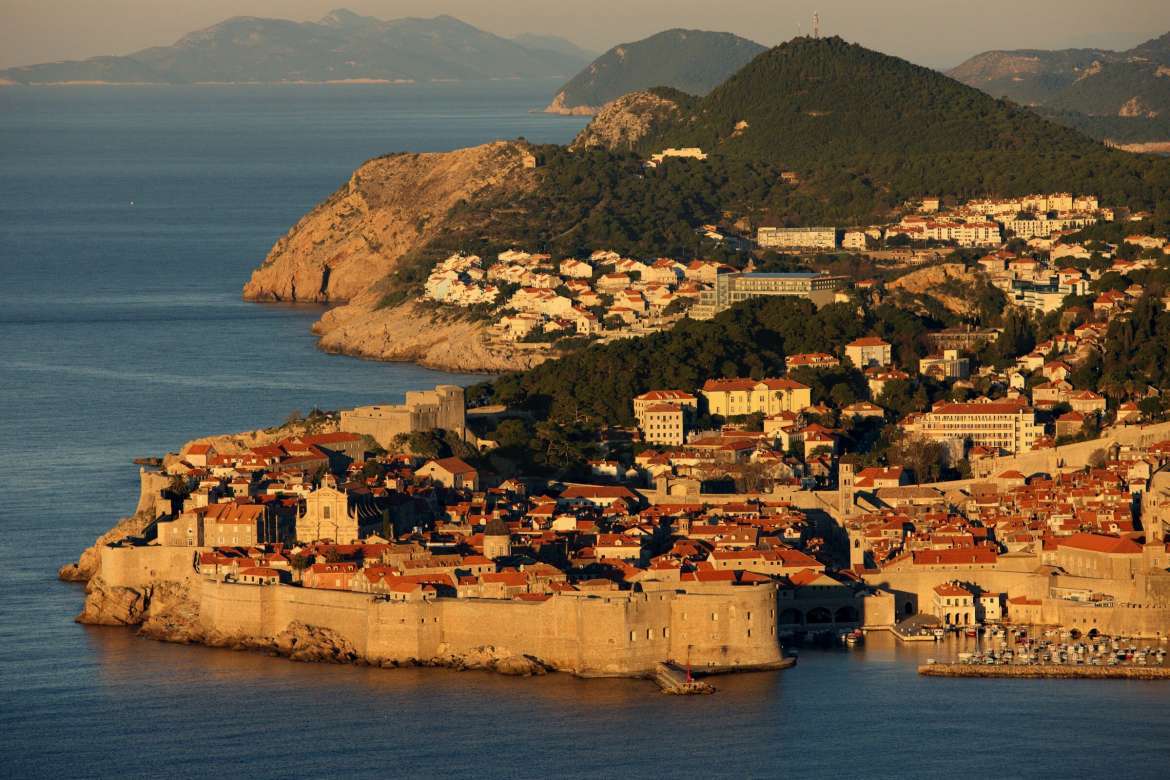
(Photo by Romulic & Stojcic)
Innovation and technology are obviously playing a key role in the development of the medical tourism industry. What trends in particular excite you the most, and what are you looking forward to at EPIC?
Yes, you are right, innovation and technology are really influencing the way we communicate with our patients, but also how we follow up on them and how we create trust and relationship with them. This is where innovation and technology kick in the most, and at EPIC we will have an opportunity to hear about amazing innovations that are used by some of the world’s giants in healthcare, but also about niche innovation that can really make a difference in the future for the patients themselves and the patient experience. I`m looking forward to listening, learning and networking with great speakers and amazing attendees from all over the world.
2019 was a great year for your own Bagatin Clinic. We last saw each other in Berlin at the IMTJ Awards, where you picked up International Cosmetic Surgery Clinic 2019, as well as TEMOS accreditation. What are your plans for 2020 and how do you see things moving in the Croatian medical tourism industry in general?
We have fantastic plans for this year, including the expansion of our clinic in Zagreb the especially dental and aesthetic medicine departments. We are starting with some new services such as hair restoration in Zagreb and Split (which is very popular among medical tourists), we will be present as speakers or partners on more than 15 different conferences and summits outside of Croatia, and will probably open one more satellite outside of Zagreb and Split (this I will share soon).

(Ognjen Bagatin at the IMTJ awards in Berlin, where Bagatin Clinic was named International Cosmetic Surgery Clinic of the Year 2019)
We are continuing with our digital transformation and will open our webshop in February, continue to work on paperless clinic and use technology to save our staff's to put an even better focus on our clients, and are in the process of developing our own app for our clients that will help to increase their patient experience with Bagatin. We are going to continue our cooperation with Cleveland clinic, and try to work more closely with other Croatian clinics and service providers so we can have a bigger impact on international markets. We have so many open projects at this moment, but let’s talk about it when we finish some of them?
To learn more about EPIC 2020, visit the official website.
For the latest from the Croatian medical tourism industry, follow the dedicated TCN section.
Total Croatia News is an official media partner of EPIC 2020.
Zagreb Ambulance Service Staff to Go on Strike on Wednesday
ZAGREB, February 3, 2020 - Ambulance crews in the capital city of Zagreb will go on strike on Wednesday demanding a pay rise so that their monthly wages are equated with those of emergency medical services.
The ambulance service in the capital city has 42 crews with 120 drivers and paramedics, and as of Wednesday, only a dozen crews will be on duty and the ambulance service will continue working with that reduce number crews until their demands are met.
The trade union of ambulance staff said that the pay rise would require an additional two million kuna to be set aside annually for their monthly wages.
The unionists said that the pay gap between wages of emergency ambulance crews in the city and their counterparts in emergency medical services is 2,000 kuna (270 euro).
More Zagreb news can be found in the Lifestyle section.
Hunt for Workers Begins, Employers Seek 4,500 Work Permits for Foreigners
ZAGREB, February 3, 2020 - It is only this year that the employment rate in Croatia could reach the level of the pre-crisis 2008, when 1.6 million workers had a job and paid contributions, the Večernji List daily of Monday reports.
The job offer is generally the scarcest in the winter months, but the market is waking up already in February, when demand for workers in agriculture, construction and tourism starts growing.
Currently 19,000 job vacancies are advertised by the national employment office, and the Ministry of the Interior's Department for Aliens in January received around 4,500 applications for work permits for foreign nationals, the daily says.
Most applications, around 3,000, refer to jobs in the construction sector, while around 700 applications are for jobs in the tourism sector. This year, around 100,000 foreign nationals could be working in Croatia. Since the labour pool in neighbouring countries is decreasing, a growing number of workers are arriving from Asia.
In February around 139,000 unemployed persons were registered with the national employment office and if the demand for workers remains the same as last year, when around 150,000 people found employment through the employment office, many of whom found temporary jobs, the official unemployment figures could fall below 100,000 by the summer.
Around 37,000 of the unemployed are people aged under 29 and they are likely to find a job more easily. Around 46,000 jobless are people who have been unemployed for a long time, says the daily.
More employment news can be found in the Business section.
Slovenian Police Strike Makes Truck Traffic Slower at Croatia’s Border Crossings
ZAGREB, February 3, 2020 - Slovenian police officers on Monday went on a warning strike, which was why the entrance of trucks and cargo vehicles travelling from Croatia to Slovenia took more time than usual at border crossings, the Slovenian traffic information service provider reported on Monday morning.
The token strike lasted between 8am and noon, affecting the traffic flow at the border crossings Bregana/Obrežje and Gruškovje/Macelj.
The strike was conducted in the form of the work-to-rule action only at the border crossings.
A police trade union organised the industrial action as it was dissatisfied with the failure of the government to deliver on its promises it had given two years ago about higher wages for the law enforcement staff.
The government claims it has fulfilled its commitments and underlines that police officers' monthly wages have increased by more than 15% in the meantime.
More news about relations between Croatia and Slovenia can be found in the Politics section.
Zadar Airport Projecting Over One Million Passengers in 2020
February 3, 2020 - Zadar Airport will be the fourth in Croatia to reach one million passengers in a single year.
Ex Yu Aviation reports that thanks to considerable growth in traffic, which Zadar Airport projects this year, the coastal airport will begin construing a new terminal this year, worth 50 million euro, financed from its own funds.
“The 2020 summer season schedule justifies our efforts to expand capacities at Zadar Airport, which will result in an increase in the level of service and create preconditions for further growth,” said Zadar Airport General Manager Klišmanić said.
But just how many passengers will Zadar Airport handle in 2020?
Over one million.
“Having welcomed 800,000 travelers in 2019 is a big achievement for us. It is a milestone. However, new records will be broken in 2020,” said Zadar Airport General Manager, Josip Klišmanić. “During our first fifty years of operations, we handled under a million passengers annually. This will no longer be the case in 2020,” he added. Recall, in 2019, Zadar Airport handled 801,347 passengers, which is an additional 197,308 compared to 2018.
Zadar Airport will thus become the fourth airport in the country to welcome one million passengers in a single year, after Zagreb, Split and Dubrovnik.
Ex Yu Aviation claims that this growth will be driven by Lauda, which will have three aircraft based there over the summer with many new routes. Furthermore, Ryanair will increase traffic to 672,000 travelers this year.
“We are delighted to launch our Zadar summer 2020 schedule, operated by a new Lauda base, as part of our commitment to growing Croatian traffic, jobs and tourism. Our Zadar summer 2020 schedule features 31 routes in total, including eleven new routes, which will deliver 672,000 customers per annum and support more than 500 jobs at Zadar Airport,” said Eddie Wilson, Ryanair’s Chief Executive. Ex Yu Aviation adds that Austrian Airlines, SAS Scandinavian Airlines, Jet2 and easyJet will launch new routes this year.
The airport also plans to extend its runway and expand its apron when it has the funds. The airport will look to the European Union or other means to finance the project.
To read more about travel in Croatia, follow TCN’s dedicated page.
Meet the Treasures of UNESCO World Heritage Site Trogir
February 3, 2020 - TCN is delighted to announce a new partnership with the Trogir Tourist Board to increase the visibility of one of Dalmatia's true gems, the UNESCO World Heritage Site of Trogir and surrounding areas.
A challenge will not only be fun, but also a pleasure. When you have such a fantastic destination with so much to offer and stories to tell, the task becomes a lot easier. And the stories of Trogir are fascinating and numerous, as we will discover together in the coming weeks and months.

A destination which is not only rich in heritage, but exploring the best ways to utilise that heritage for better quality tourism. The recent rebranding of Trogir into the town 'Marked by Masters' was innovative indeed, and a truly spectacular day was had by all a few weeks ago at the launch, which you can read about here (and more in the promo video below).
As other coastal towns and cities have lost the artisans and craftsmen within the city walls (Dubrovnik no longer has any, for example), Trogir has several great stories of modern masters making their mark inside Trogir's ancient walls today - fantastic authentic experiences which we will be documenting in the coming weeks (we already started with the coral jewelry genius of Misel).
There are so many other things to explore in Trogir, such as the surrounding vineyards, which are home to the original Zinfandel. But all that is to come, and we begin by getting to know the UNESCO town through its architecture through the eyes of our UNESCO heritage correspondent, Filipa Marusic.
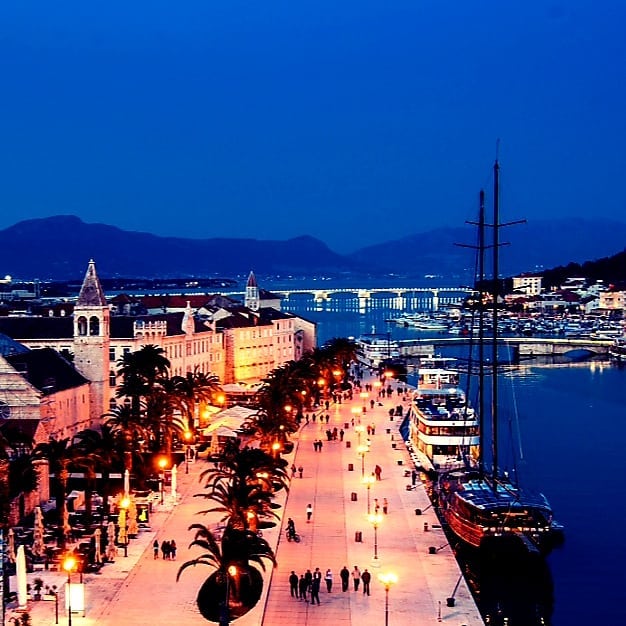
Croatia is blessed with no less than 11 UNESCO World Heritage sites, and few are as compact or spectacular than the old town of Trogir. The historic city centre is an excellent example of urban continuity and is a well-preserved medieval town built on layers of the Hellenistic and Roman city. Different rulers and periods have bequeathed many valuable buildings and fortifications. The historic town has numerous Romanesque churches and lovely Renaissance and Baroque buildings from the Venetian period. The influence of different cultures and times is visible in the whole town, and the city was added to the UNESCO list back in 1997.
The origin of the name Trogir dates back to the 2nd century B.C., which proves the ancient foundation of the town. The name means 'goat hill', which was probably related to the fact there were goats in the area. Additional evidence of the Greek presence is the Kairos relief, which is from the 3rd century B.C. – part of the permanent exhibition in a Benedictine monastery next to St. Nicholas church. The Kairos legend says that the god of the lucky moment is faster than the wind, and if you catch him by the tuft on this head, you will have your lucky moment and happiness throughout life.
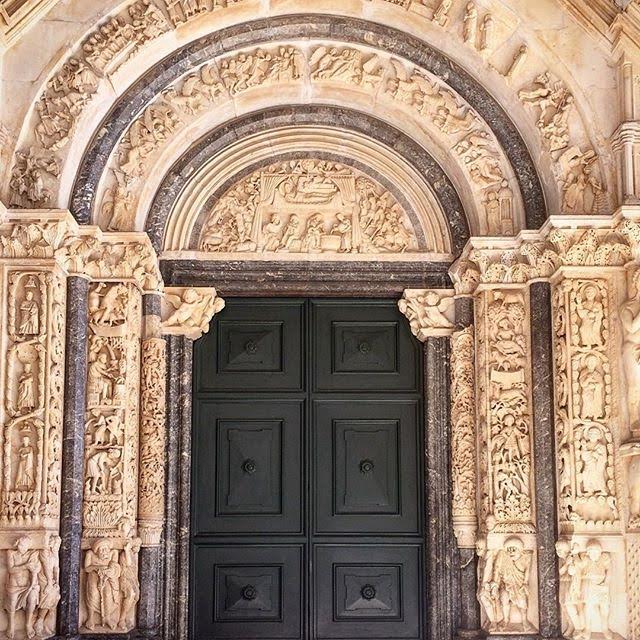
Different buildings from different times around Trogir city centre create a unique city centre complex where almost everything has its history. There are numerous sacral and residential buildings for the city complex.
The most attractive building is the Cathedral of St. Lawrence or - as locals call it - of St. John of Trogir. Its unique work of art from different art periods ranging from Romanticism, Gothic, Renaissance, and Baroque. It took four centuries to build, and building started around 1200 on the foundation of the early Christian Church and probably former Greek temple. The length of the construction can be seen on the bell tower. The first floor is Gothic; the second floor has the features of Venetian floral Gothic of the 15th century while the third floor has Renaissance elements and was completed at the end of the 16th. Different artists were working on each level of the tower.
When you are standing in front of the main entrance, there will be a stunning Radovan portal gate, which is the most famous monument from Romanesque times. The Radovan portal construction ended in 1240, and 50% is the work of master Radovan and 50% work of his students. The lunette shows the birth of Christ, and the arches show different scenes from Christ's life. The portal has sculptures of lions on the left and right as guardians, and there are on each side sculpture of Adam and Eve. There are images of apostles and Bible motifs. Additionally, there are images of everyday life and agricultural work, depending on the seasons. The sculptures of the Saracens who attacked Trogir in 1123 are at the base as portal bearers. At the top of the portal there is the sculpture of St. Lawrence with the grill - The legend says St. Lawrence during his martyrdom said to his torturers "I'm well done, turn me over" and because of this he is the patron saint of the chefs and comedians.”
When you go past the portal and enter this three-nave church, the first thing you can see are narrow Romanesque windows and three semicircular apses in the east. The central nave is the location for the main altar with ciborium and sculptures of Our lady and angel Gabriel, made by master Mavro in the 14th century. In front of the sculptures, there are carved wooden choir seats work of Ivan Budislavić from the 15th century. In Baroque times, the main altar got a new marble tabernacle and statues of Blessed John and St. Lawrence. In the Church, the central place is for the crucifix painted by Blaž Jurjev Trogiranin in the 15th century. The Church has various paintings that show images from saints' lives. Another sight is a large wooden candelabrum in the form of a Greek cross of the 16th century, which was powered with oil before, but which has since been electrified. The Church had its first organ in the 15th century and then again during Baroque times. The new organ came to the church mid-20th century, but it was built partially from the old pipes.
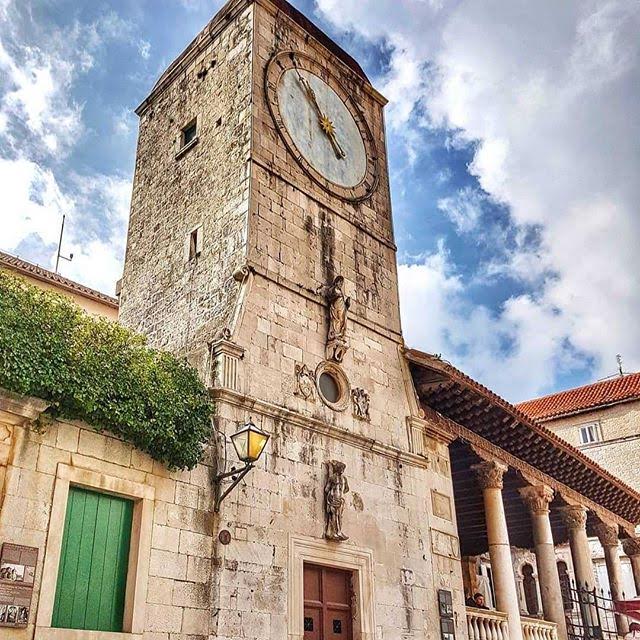
Another work of art is the Blessed John’s Chapel, built in the 15th century according to the draft of Niccolò Fiorentino, with contributions from Andrea Alessi and Ivan Duknović. They used ancient inspiration to make the chapel (Jupiter's temple in Split). The reliefs are showing the winged boys with torches that represent the afterlife. Life on earth is presented with apostles led by Christ, while round windows are a symbol of the sun. The cassette ceiling symbolizes the vault of heaven, and the central medallion represents God. The Blessed John’s Chapel has marble angles made in baroque style. There is a sarcophagus with the remains of the Blessed John.
The treasury of the cathedral is the place for golden and silver objects, church clothes, written documents. The Trogir diocese was abolished in 1828 and is from then part of Split-Makarska archdiocese. The sacristy has a library and coat of arms of the Trogir bishops.
In the vestibule in front of the church there is the 15th-century baptistery made partially by Andrea Alessi. There are famous reliefs made by him like Christ's Baptism located above the entrance and St. Jerome's cave inside the baptistery. The baptistry has a rectangular ground plan with cassette vaulting on the ceiling. There are images of angels with a wreath probably made under the influence of Niccolò Fiorentino. In the centre, there is the stone baptistry covered in wood in the upper part.
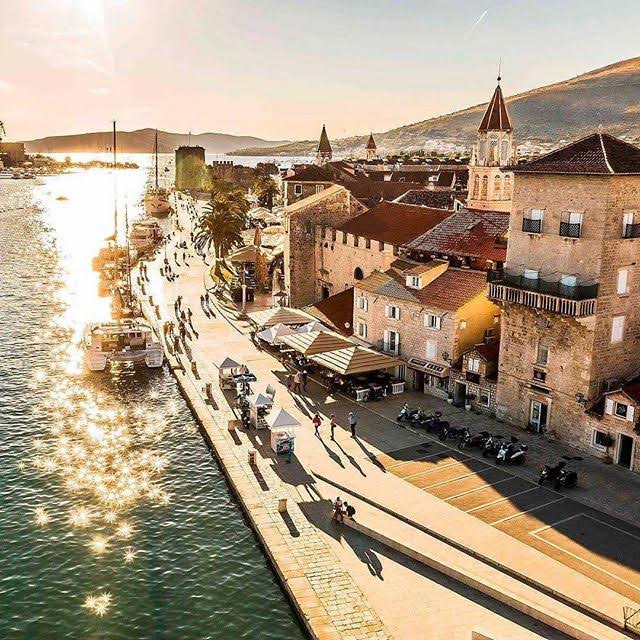
Other sacral buildings include Saint Dominic monastery, Our lady of Mount Carmel Church, All Saints Church, Saint Peter's church, Saint John the Baptist church, Saint Sebastian Church, Saint Barbara Church, Saint Michael Church and Church of St Nicholas.
Saint Dominic Monastery dates back to the mid-13th century. There was a single nave church with a Gothic tower in the 14th century. There are several works of art in the monastery and Church as old as from the 14th century.
The Church of Our Lady of Mount Carmel dates from the Middle Ages and was expanded in mid-17th century.
All Saints Church was renovated at the end of the 17th century and is between the Church of Our Lady of Mount Carmel and St. Dominic. As it was old, the Church was closed at the end of the 19th century, but from the second half of the 20th century, it is used as a gallery. Today it is a souvenir shop.
St. Peter's church used to be within the Benedictine monastery intended for noble daughters. It was probably established by the wife of Bela IV who was hiding in Trogir in the 13th century. The monastery existed until the 18th century.
The Church of St. John the Baptist (13th century), at the time of construction, was an integral part of the men's Benedictine monastery. It has the features of the Romanesque style, with one nave. In the mid-19th century, it was closed, and was a temporary stone exhibition. Nowadays, the church is place for the collection of church sculptures.
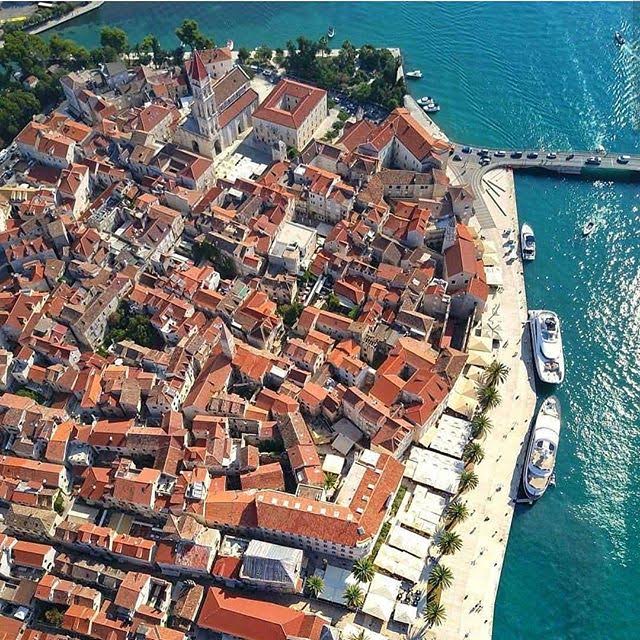
The Church of St. Sebastian is from the mid-15th century and was a votive church as a sign of thankfulness for salvation from the plague. It has a semi-circled apsis form turned towards the South, and with the entrance towards the North, since with its eastern wall, it leans on the neighboring Church of St. Mary, and instead of a bell tower, it has the city clock tower. The Renaissance front and the sculptures in the interior are a work of art of Niccolò Fiorentino. In the mid-19th century, it became a warehouse. Nowadays, it is fully renovated and is a memorial for heroes of the Homeland War.
Old Croatian three-nave Church of St. Barbara (St. Martin), with three semi-circled apses in the East, a bell tower in the middle of the dome and shallow niches in the sidewalls, was built in the early Romanesque style in the 11th century, with its northern wall leaning on the town loggia – the courthouse. In its construction, parts from the antiquity were used, in particular posts and capitals. From the second half of the 19th century, it was a warehouse, and at the end of the century was a depository of stone fragments. It was renovated on several occasions during the 20th and at the beginning of the 21st century.
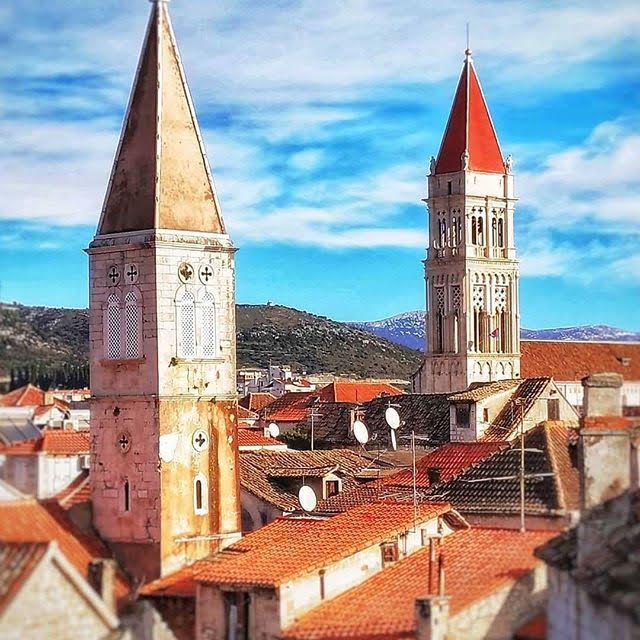
The bell tower of the Church of St. Michael is a remnant of a demolished church and monastery, destroyed in the Anglo-American bombing in 1944. The Church was established in the 14th century, while the monastery, intended for the female students, was founded in 1595. The French rule abolished monastery in 1806. Later, there was a public school on the monastery premises, while at the time of the First World War it was the soup kitchen for the poor.
The Church of St. Nicholas (and the Kairos art collection) was created on the foundations of older smaller churches and the southern gate of the antique town, with the stylistic features ranging from Romanesque period to Baroque. It is an integral part of the only preserved women's Benedictine monastery founded in 1064, intended for noblewomen. The bell tower is from the end 16th century with lacy, stone grids, work of the stonemason's family of Tripun Bokanić. The interior has Baroque style ornaments, with stucco decorations and portraits of the saints. On the southern wall of the monastery's courtyard, there is the oldest Greek inscription built-in (2nd century B.C.) mentioning the names of people who performed public services. The courtyard is the place for a small stone exhibition from which one enters into the Kairos art collection, whose most valuable exhibit is the relief with the figure of Kairos, a god of the happy moment created in the period between the 4th and 3rd century B.C. In the exhibition, there are stone fragments found during archaeological research in the Church itself and heritage in paintings, silver, church vestments, manuscripts, etc.
In the historic city of Trogir, there are plenty of residential buildings and old palaces. We will have a look into Garagnin-Fanfogna palace, Ćipiko palaces, Town Hall, Lucić palace, and other houses from notable families during history.
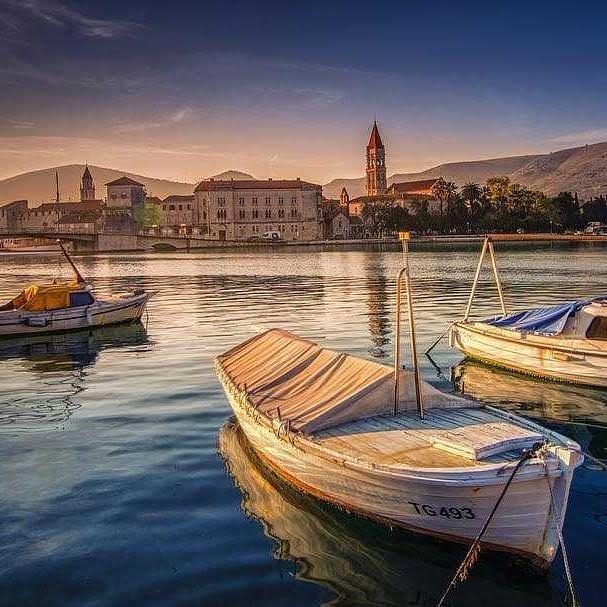
The complex of the Garagnin – Fanfogna Palace consists of two blocks of Romanesque and Gothic houses that in the second half of the 18th century became one bigger building. Today it's the place for the Museum of the City of Trogir. The permanent exhibition of the city museum includes the Garagnin – Fanfogna library in the original interior from the early 19th century, the Archaeological collection presenting the earliest history of the Trogir area and the foundation of the town itself.
There is a collection of the cultural history from the Middle Ages and the Modern Age presenting the town history from the 13th to the beginning of the 20th century. The traditions related to everyday life from 17th to 18th century are in the living room of the Garagnin family. The museum has the stone exhibition where one can see a collection of stone monuments that showcase the artistic tradition of stonemasonry workshops in Trogir as well as the room with work of Ivan Duknović. There are also the oldest urban layers of the town with remains of the houses from the 2nd to 1st century B.C. Trogir Museum is also a home for Cata Dujšin Ribar Gallery and Zlata Radej.
The two Cipicco/Ćipiko Palaces, the large and the small ones, were created by connecting Romanesque buildings. The palace has a lot of artwork from artists from the 15th century, like Niccolò Fiorentino. Andrea Alessi, Ivan Dubković. There are both Gothic and renaissance decorations and architectural influence.
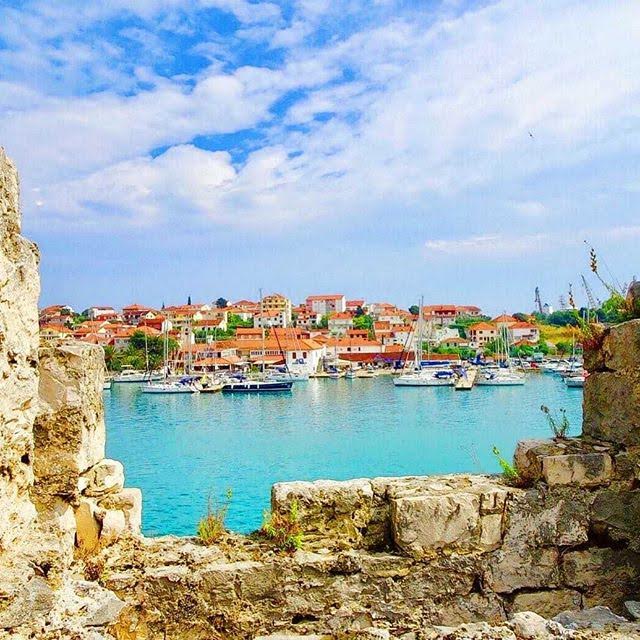
The Town Hall dates from the 13th century, and it was the centre of political power in Trogir for a century. It has kept its original purpose until today as it stayed the administrative centre of the town. It was also a theatre where noble families would mark their spots with emblems. During more recent reconstructions, people engraved all found emblems on city loggia.
There are several more palaces including Lucić palace - the birth house of the father of Croatian historiography, Ivan Lucić, located on the waterfront. Another palace is the Stafileo/Štafilić Palace situated along the central longitudinal street that following the direction of the antique decumanus (street in direction east - west). Then the group of Andreis houses located in the southwestern part of the town, near the Church of St. Peter, the group of houses of the Dragazzo family, the Berislavić house – birth house of the Croatian Ban and Bishop Petar Berislavić who history remembers as a courageous fighter against Ottoman invasion.
The City Loggia is situated on the southwestern side of the main city square, on the one side leaning to the Church of St. Sebastian – a tower with the city clock, and on the other side to the Church of St. Barbara. was built as a porch at the end of the 13th century. The 17th century stone table has its place in the loggia above which there is a renaissance relief of Niccolò Fiorentino with a presentation of Justice and city patron saints – St. John and St. Lawrence from the 15th century, with several subsequent interventions.
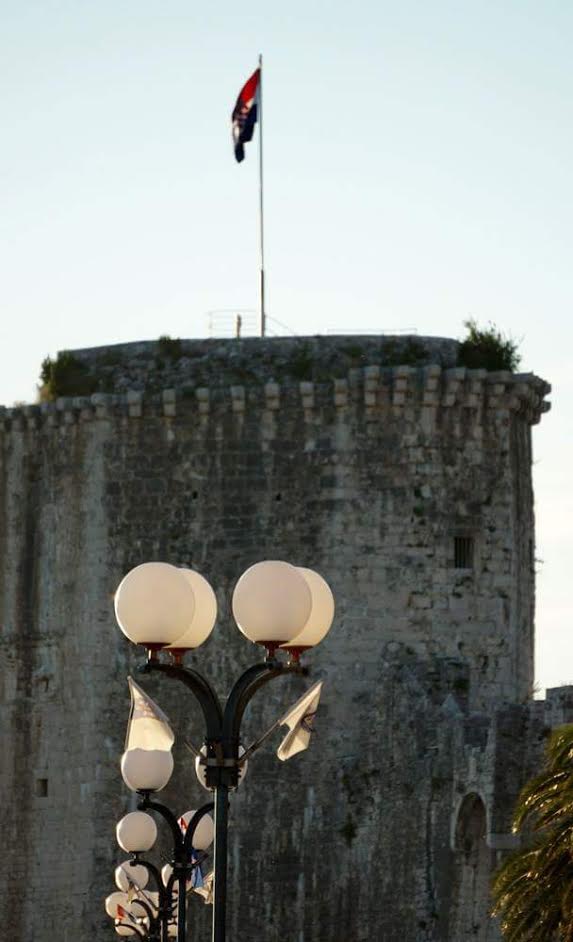
There was a statue of the Venetian lion of St. Mark, which locals removed like all the other lions in town in the 1930ies. On the southern wall of the city loggia, there is a relief of Ban and Bishop Petar Berislavić, a work of art of Ivan Meštrović from 1938. In the past, the loggia served as a courthouse and as a sales location and place where duke would speak to people. Today you can enjoy a capella klapa music during the summer. There is also the gallery of the art collection of sacral objects of the cathedral of st Lawrence. There are numerous works of art related to sacral architecture.
The small loggia situated to the East of the southern city gate was a resting area for travelers who were late to enter the town after the city gate would close. On the wall of the loggia the writing on the wall describes its purpose. It served as a tent to keep the sun away and shelter from the wind for the people of Trogir and visitors. Until recently, the small loggia was peškarija – a fish market, while nowadays, in the summer, it is a place for the souvenirs.
The Northern City Gate is a new city gate built in the 17th century, and today's looks have from the 18th century. Above the door, there is the statue of St. John of Trogir, patron saint of the city of Trogir. The Southern City Gate is dating from the 16th century.
In front of the southern city gate, there is Štrandac – the flag stand which has changed its locations during history.
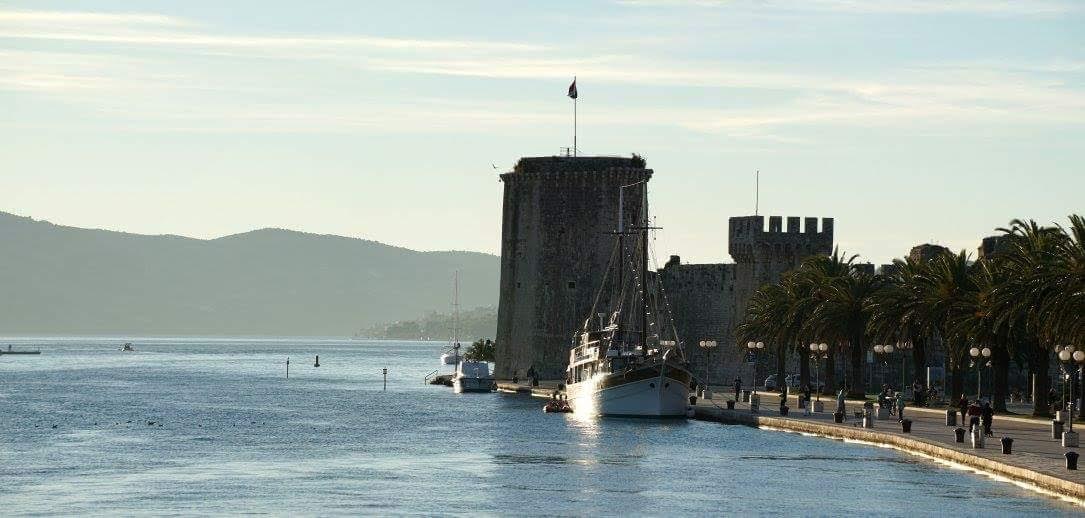
The Trogir historic city centre has two fortresses – Karmelengo and St Mark tower.
The St. Mark Tower circular tower is from the 15th century, and it was a defence point and a slaughterhouse until the second half of the 20th century, while today its home to Dalmatian music. Kamerlengo fortress was built in the 15th century after Venetian arrival to Trogir. The original purpose was to accommodate the Venetian army while today is the lace for different music concerts and events.
From all these buildings and monuments, it's obvious Trogir is an exceptional example of the town that has continuity in urban development for centuries with a lot of representative artwork from Romanesque and Renaissance times.
Learn more about this lovely town in the Total Croatia Trogir in a Page guide and 25 things to know about Trogir, or visit the official tourist board website.
This article is produced in association with the Trogir Tourist Board.
HNK Split Promotes February Events with Decorated Cat Houses Near Theater
February 3, 2020 - The Croatian National Theater Split (HNK Split) is using 'cat island’ next to the official theater entrance to help promote its February events.
The citizens of Split are well aware that a few years ago, street cats began settling in the central green area next to HNK Split. Over time, they have not only taken over this green city area, so much, that is has been given the name ‘cat island’, but they've also won the hearts of locals and visitors alike.
Today, Splitski Dnevnik writes that the dozen or so cats who spend their time here each day will now find shelter thanks to cat homes named in honor of the February event Bambina, which is expected to premiere on February 14, but also Romeo and Juliet, Cicibela and Roko, to cover the whole ‘month of love’.
"This is a small intervention. The first time I came to Split, I was surprised at how many cats were fed, chipped, and neutered, which is good for the theater because we have drastically fewer mice. The other thing is that a lot of tourists take photos of the cats, and many citizens feed them. It occurred to me that, following the model of Antalya, where the city services set up shelters in the places cats gather, we wanted to do a similar project. Not only will this make them more comfortable, but we can also mark the premiere of the musical Bambina in this way,” said the leader of this charity and promotional action, called 'Homes for cats in the theater square', intendant Srećko Šestan.
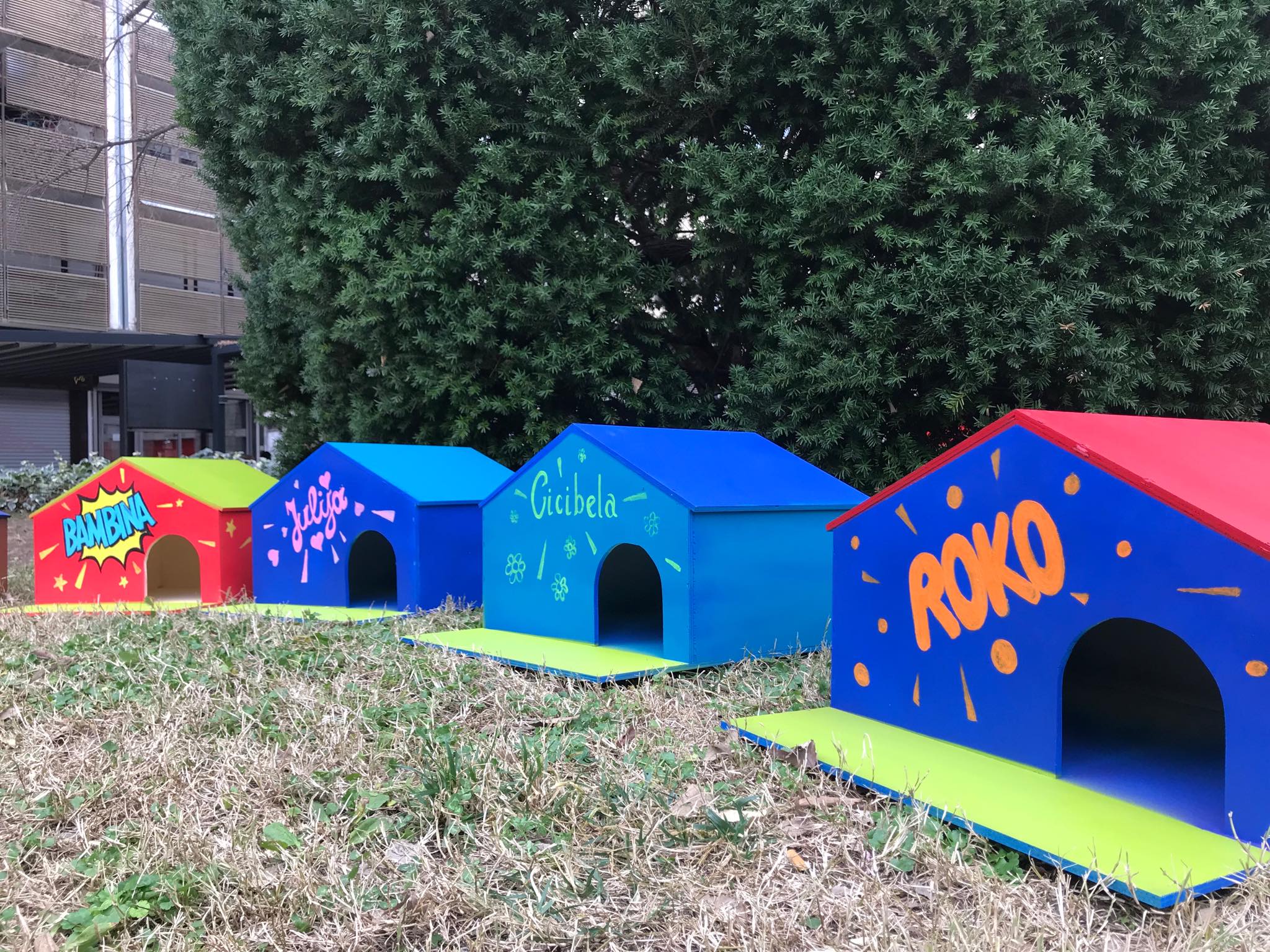
Two houses read the names Tonca and Mariana, who are characters from the Bambina musical.
"This is a small, wonderful human gesture to our little friends. I have been a member of Animal Friends for many years, and I have Frida, a well-fed pet cat at home, which is why I think it is wonderful to help the little four-legged friends of the theater this way. I am also glad that one of the homes is called 'Bambina', although in our play, it is the name of a tanker, so it will probably be for the biggest cat. This kind of thing makes everyone a little bit better,” said Bambina show director Krešo Dolenčić.
The seven colorful houses brightening up the square were made in a fireproof plywood theater workshop. They are intentionally not grounded, as Šestan says, hoping that the citizens of Split will respect them and not take them home.
"If someone needs a cat shelter, we will gladly make it, because they were made by our employees and painted by our painters," concluded Šestan.
To read more about lifestyle in Croatia, follow TCN’s dedicated page.

